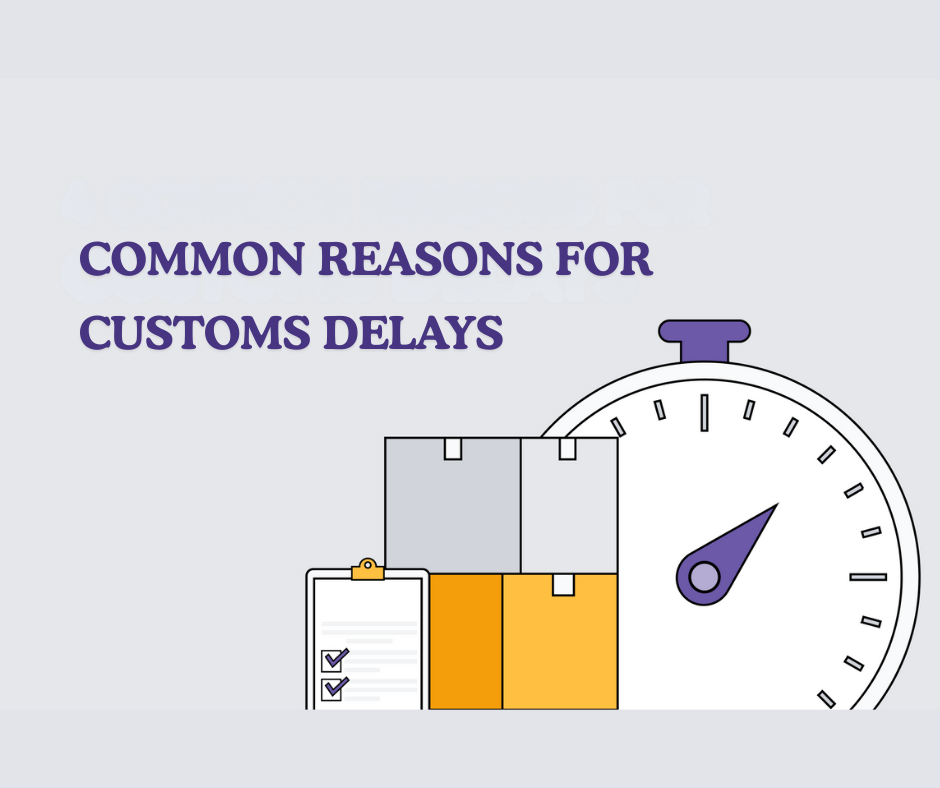Common Mistakes That Delay Customs Clearance And How to Avoid Them
- Noel Tran
- Aug 19
- 4 min read

Import delays can cost you money, disrupt your supply chain, and damage relationships with your customers. As a licensed U.S. Customs broker, I’ve seen many shipments get stuck simply because of avoidable errors. Here are five common mistakes and how you can prevent them.
1. Incomplete or Incorrect Commercial Invoice
What goes wrong: A missing information, wrong quantity, or unclear value can trigger CBP questions. Here are common errors for example:
Error Category | Example Issues |
Missing Data | - No full shipper and consignee details (name, address, contact) - Missing invoice date or invoice number - No port of entry or final destination |
Product Descriptions | - Writing “clothing” instead of “Women’s 100% cotton woven blouse” |
Wrong or Missing Country of Origin | - Listing “China” when the actual origin is “Vietnam” due to assembly rules |
Currency and Value Errors | - Forgetting to indicate currency (USD, EUR, etc.) |
Mathematical Mistakes | - Unit price × quantity doesn’t match total value - Inconsistent totals between pages |
No Incoterms or Unclear Shipping Terms | - Missing whether it’s FOB, CIF, DDP, etc. |
Solution:
✅Double-verify every detail, ensure consistency across all documents
✅Consider having a licensed customs broker review before submission.
2. Wrong Harmonized Tariff Schedule (HTS) Code
What goes wrong: The HTS code determines duty rate (percent of import tax you pay), eligibility for Free Trade Agreements (e.g., USMCA, CAFTA-DR), applicability of additional tariffs and import restrictions (e.g., quotas, licensing requirements). Thus, incorrectly classifying goods via HTS codes can result in wrong duties, penalties, or audit triggers.
Error Category | Example |
Misidentifying material composition | Coding “polyester jacket” as cotton because of lining, not realizing classification is based on the fabric. |
Wrong product function or type | Classifying a “backpack” under travel goods when it’s actually a specialized laptop case with a different duty rate. |
Solution:
✅Stay updated on tariff changes, check product composition and features
✅Request a CBP binding ruling ✅Work with a professional who specializes in accurate classifications.
3. Missing Required Partner Government Agency (PGA) Documents
What goes wrong: CBP isn’t the only U.S. authority that regulates imports. Many shipments must be cleared by Partner Government Agencies (PGAs) before they can enter the country. These agencies set requirements to protect public health, safety, environment, and national security.
Examples of PGAs:
FDA – Food and Drug Administration (food, medical devices, cosmetics)
USDA – U.S. Department of Agriculture (plants, produce, wood products)
CPSC – Consumer Product Safety Commission (children’s products, safety items)
Solution:
✅Prepare documents such as certificates, permits, and notices which should be ready before goods ship.
✅Work closely with a licensed customs broker as they can flag PGA requirements early, especially for new product lines.
4. Late Submission of Entry Data
What goes wrong: CBP requires importers to file entry data electronically. For air shipments, entry data must be transmitted before the plane lands in the U.S. so CBP can review the information, assess admissibility, and identify shipments for possible inspection.
When data is submitted late, the cargo may be flagged for extra examinations. Importers may face penalties or higher compliance risk scores, leading to more frequent inspections in the future. Common causes of late submission for example:
Last-minute document preparation
Delays from the overseas supplier
Failure to coordinate with customs broker
Relying on manual instead of automated processes
Assuming air cargo can be cleared after arrival
Solution:
✅Provide required documents to your broker as soon as the shipment is booked.
✅Require shipping documents at least 48 hours before cargo departure.
✅Coordinate with your forwarder to ensure compliance
✅Work with an experienced customs broker
5. Ignoring Country of Origin Marking Rules
What goes wrong: Every item must be marked correctly. A missing or incorrect label can lead to marking notices, delays, and re-labeling costs. Common mistakes:
Goods arrive without any country of origin label.
Incorrect country shown
Using a removable sticker instead of permanent marking.
Marking hidden under packaging where consumers cannot see it.
Marking only packaging, not the product
Using abbreviations
Solution:
✅ Mark products correctly at origin
✅ Ensure markings are legible, permanent, and conspicuous
✅ Use full English names
✅ Work with a customs broker to check if there are any special rules for textiles, footwear, and electronics, etc.
CBP places strict emphasis on accuracy, transparency, and preparation. Mistakes even small can lead to serious clearance delays or penalties. Therefore, working with a knowledgeable customs broker can prevent most clearance delays. At Spirit CHB, we review your documents before shipment arrives, so you can focus on your business instead of worrying about holds and penalties.
Contact Spirit CHB Inc – A Trusted U.S. Customs Brokerage with 20+ Years of Experience
📧 Import@spiritchbinc.com📞 714-383-9973
📌 Disclaimer & Contact Information
This blog post is intended to provide general information. It does not constitute legal advice or a comprehensive compliance guide. For specific questions or assistance with your import transactions, please consult official U.S. Customs and Border Protection resources or reach out to a licensed customs broker.
For more information, visit the official CBP website: https://www.cbp.gov
Or contact Spirit CHB, Inc. – A Trusted Customs Brokerage📞 Phone: (714) 383-9973




Comments